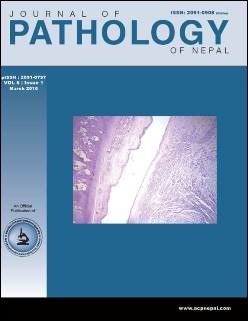Clinicopathological correlation of endometrial, myometrial and ovarian pathologies with secondary changes in leiomyoma
DOI:
https://doi.org/10.3126/jpn.v6i11.15677Keywords:
Leiomyoma, Endometrium, Myometrium, OvaryAbstract
Background: Leiomyomas are the most common benign uterine neoplasm in women of reproductive age group. Uterine leiomyoma are steroid dependent tumors. Leiomyomas are diagnosed by the clinical examination, ultra sound and histopathological examination of the hysterectomy specimens. The aim of this study was to know the clinical symptoms and to diagnose endometrial, ovarian, and other associated coexisting pathologies with leiomyoma and their correlation with leiomyoma.
Materials and Methods: Present study was conducted on hysterectomy specimens between January 2008 to 31 December 2015 in the Pathology Department of Rural Institute of Medical Sciences and Research, Saifai, Uttar Pradesh, India. Specimens were grossly examined, sectioned and hematoxylin and eosin stain was applied. Slides were reviewed by pathologist and diagnosis was made.
Results: A total of 437 patients were included. The common age group of patients with leiomyoma was 31-40 (42.10 %). Menorrhagia (60.86 %) was the prime clinical symptom. Among endometrial pathologies and changes, proliferative phase was maximum ( 48.51 %) and endometrial hyperplasia was ( 5.03%) . Proliferative phase was seen more with degenerative changes (42.1%) and hyaline degenerative was frequent (15.33 %). Adenomyosis was also seen (15.10 %). The common pathologies in ovary were simple serous cyst (6.40 %).
CONCLUSION – Leiomyoma uteri is a myometrial pathology presenting with clinical symptom of menorrhagia. Proliferative phase, endometrial hyperplasia were common endometrial changes and pathology. Adenomyosis was also common. Chocolate cyst in ovary was also seen which all shows a strong association of hyperestrogenic state being responsible for leiomyoma and all associated pathologies.
Downloads
Downloads
Published
How to Cite
Issue
Section
License
This license enables reusers to distribute, remix, adapt, and build upon the material in any medium or format, so long as attribution is given to the creator. The license allows for commercial use.




